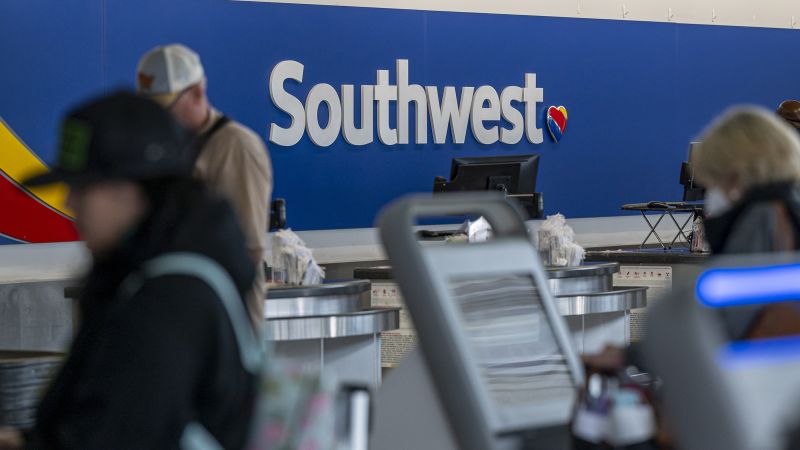CNN
—
Federal authorities and Boeing are trying to figure out why a 737 Max 8 experienced a rare, unsafe back-and-forth roll during flight.
The oscillating motion is known as a Dutch roll, and one characteristic described by the Federal Aviation Administration is the nose of an aircraft making a figure-eight.
There were no injuries onboard Southwest Airlines flight 746 on May 25, according to the airline and a preliminary report by the FAA. The report said the crew “regained control,” and the plane safely landed.
But the aircraft suffered “substantial” damage and the FAA classified the incident as an “accident.” The FAA report said an inspection “revealed damage to the standby PCU,” or power control unit, which controls the rudder.
It is unclear if the damaged unit led to or was a result of the roll.
The plane has not flown since landing in Oakland, California after the incident, except to move it to a Boeing facility in Washington state. Boeing did not immediately comment to CNN.
Southwest told CNN it referred the incident to the FAA and National Transportation Safety Board and is participating in and supporting the investigation.
The incident occurred almost three weeks ago and was added to a FAA database this week. There were 175 passengers and six crew onboard, according to the airline.
CNN has reached out to the NTSB. It has not said whether it is investigating the incident.
In February, the FAA required airlines flying some 737 Max 8 and similar aircraft to inspect the rudder assembly for loose or missing nut, washer and bolt. It said the flaw would prevent the pilots from controlling the rudder using foot pedals. Authorities have not said if this condition and the Dutch roll last month are related.
Most passengers have never felt a plane make this movement — and most airline pilots have never experienced it in actual flight.
“It’s very obscure,” aviation safety analyst and former airline pilot Kathleen Bangs told CNN. “It’s a very uncomfortable movement and you feel the tail swinging around.”
While moving forward in flight, airplanes can pivot along three axis: Nose up and down, known as pitch; wings dipping down or raising up, known as roll; and the tail shifting left or right, known as yaw.
Airliners turn using a typically seamless combination of roll and yaw coordinated by the aircraft’s computers. These large aircraft also have yaw dampers that make small adjustments throughout flight.
In the Dutch roll, the plane both rolls and yaws excessively. Passengers would feel the plane shift to one side, and back to the other — moving back and forth, Bangs said.
She said airline pilots train for scenarios where their yaw dampers fail. They could take an aircraft simulator to a high altitude and turn off the yaw damper.
“Then you stomp on a rudder pedal really hard to try to initiate [the roll] in the simulator,” Bangs said.
To get out of a Dutch roll, pilots can slow the aircraft and descend to thicker air. Modern airliners are designed to be inherently stable in air, she said, so the plane may return to level flight with minimal additional input.
But the forces can be powerful. In 1959, four of the eight occupants on a Boeing 707 test and training flight were killed just outside of Washington, DC, after extremely steep Dutch rolls.
“The aircraft immediately yawed and rolled violently to the right,” reads a report from the Civil Aeronautics Board, which investigated the incident. “Several gyrations followed and after control of the aircraft was regained, it was determined that three of the four engines had separated from the aircraft and it was on fire.”








:max_bytes(150000):strip_icc()/roundup-writereditor-loved-deals-tout-f5de51f85de145b2b1eb99cdb7b6cb84.jpg)


